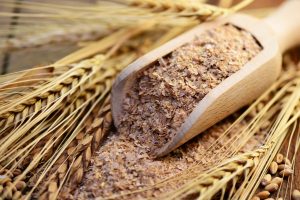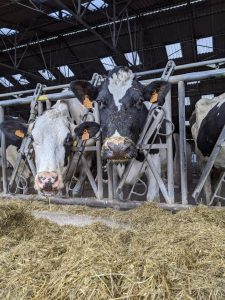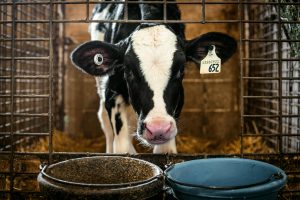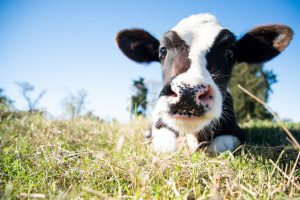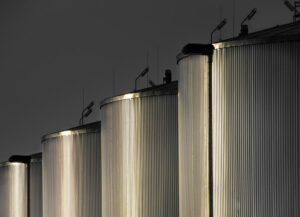Álvaro García
Bovaer®, the commercial name for 3-nitrooxypropanol (3-NOP), represents a breakthrough in mitigating methane emissions from ruminant animals like cows and sheep. By targeting methanogens in the rumen, Bovaer® effectively reduces enteric methane production by up to 30% in dairy cattle and 45% in beef cattle, depending on the diet and management system. While the potential for reducing agriculture’s environmental footprint is significant, there is a need to address several concerns for its sustainable adoption.
Rumen Microbial Balance and Fermentation Dynamics
Bovaer® works by inhibiting the enzyme methyl-coenzyme M reductase, a key catalyst in methanogenesis. While effective, this mechanism raises concerns about long-term effects on the rumen microbiome. Rumen methanogens play a critical role in maintaining hydrogen balance during fermentation. Upon methane production inhibition, excess hydrogen follows alternative pathways, such as propionate formation or acetate reduction. Although this can improve energy efficiency, the broader impacts on volatile fatty acid profiles and microbial stability over prolonged use remain uncertain.
Additionally, questions arise about whether methanogens could develop resistance to Bovaer® with continuous use. As adaptive microorganisms, methanogens may evolve mechanisms to bypass inhibition, potentially reducing the long-term efficacy of 3-NOP. There is a need for more research to monitor this risk.
Residue Safety and Consumer Perception
Bovaer® degrades rapidly within 24 hours into compounds such as nitrate and nitrite, metabolized or excreted by the animal. Regulatory agencies like the European Food Safety Authority (EFSA) have confirmed that Bovaer® leaves no detectable residues in milk or meat. However, concerns remain regarding the long-term environmental impact of these breakdown products. Excessive nitrate levels in manure or groundwater could pose risks for ecosystems if not managed effectively.
Consumer acceptance is another challenge. Despite its safety profile, the use of “feed additives” there is skepticism about its use, particularly among advocates for organic or natural production systems. Public trust remains a key challenge in adopting technologies like Bovaer®. While science proves its effectiveness in reducing methane emissions, one cannot win the fight against emotion-driven skepticism with research facts alone. Terms like “feed additives” often trigger fears of unnatural practices or corporate motives, overshadowing clear environmental benefits.
The scientific community must move beyond facts and connect with values and emotions:
- Present Benefits in a Relatable Way – Highlight Bovaer’s role in climate action, sustainable farming, and future food security.
- Tell Stories, Not Just Data – Share farmer success stories and emphasize shared environmental goals.
- Build Transparency and Trust – Address concerns openly and avoid dismissing public fears as irrational.
Science and emotion must work together. Bridging this gap requires not just proving Bovaer® works but making it resonate with people’s priorities and lived experiences.
Economic and Practical Barriers to Adoption
The cost of implementing Bovaer® remains a key concern for livestock producers. Although the additive reduces methane emissions and may improve feed efficiency, its adoption requires upfront investment and ongoing administration costs. Many producers operate on tight margins, and the return on investment (ROI) may not be immediately clear without economic incentives like carbon credits or subsidies.
For example, the cost of Bovaer® is around $0.30 to $0.50 per cow per day, depending on the region and feeding system. In a dairy operation where a cow produces 90 pounds of milk per day:
- At a milk price of $20 per CWT, this cow generates $180 per day in revenue.
- The daily cost of Bovaer® represents:
- 0.17% of daily revenue at $0.30 per day.
- 0.28% of daily revenue at $0.50 per day.
While the percentage impact appears small, the additional cost can be significant for producers operating with narrow profit margins. Economic incentives, such as carbon credits, subsidies, or premium milk pricing for reduced emissions, will be necessary to make adoption more feasible.
Practical administration is another barrier, particularly for pasture-based systems where daily delivery of Bovaer® is challenging. Unlike feedlot systems, where Bovaer® integrates easily into total mixed rations, grazing operations require innovations such as slow-release formulations or alternative delivery methods to ensure consistent dosing.
Environmental Trade-Offs and Regulatory Obstacles
While Bovaer® significantly reduces methane emissions, it may lead to unintended environmental trade-offs. For instance, the nitrate and nitrite byproducts of 3-NOP metabolism could contribute to nitrogen emissions or leaching if improperly managed. Although current research shows minimal impact, there is a need for long-term studies on environmental pathways.
Regulatory approval remains another concern. Bovaer® has been authorized for use in regions like the European Union, Brazil, and Australia. In the United States, the U.S. Food and Drug Administration (FDA) completed its comprehensive review of Bovaer® in May 2024, determining that the product meets safety and efficacy requirements for use in lactating dairy cattle.
This approval marks a key step toward more sustainable dairy farming in the U.S. However, the timeline for regulatory approval in other key markets may delay global adoption and limit its impact on methane reduction. Clear regulatory frameworks and harmonized safety standards are essential to facilitate widespread use.
In summary, while Bovaer® promises environmental benefits, addressing potential environmental trade-offs and going through regulatory hurdles are crucial for a potential successful and widespread adoption.
Bovaer®: Grazing vs. Confinement Systems
Both diet composition and total dry matter intake (DMI) influence methane emissions in dairy systems, leading to notable differences between grazing and confinement systems. In grazing systems, cows consume primarily forage-based diets, which are higher in fiber. The fermentation of fiber in the rumen produces more hydrogen, a key substrate for methanogens, resulting in higher methane emissions per kilogram of feed consumed compared to diets with higher grain content. However, grazing cows typically have lower total DMI because fresh forage is less energy-dense, and there is less intake because of grazing behavior and forage availability. As a result, while methane production per unit of feed is higher, the total methane emissions per cow tend to be lower in grazing systems.
In contrast, cows fed total mixed rations (TMR) in confinement systems, which include significant amounts of grains and concentrates. These diets are more starch-rich, promoting the production of propionate during fermentation, which reduces hydrogen availability for methane synthesis. This leads to lower methane emissions per kilogram of feed intake. However, confinement cows consume more DMI overall to support higher milk production. The combination of higher feed intake and greater milk yields results in higher absolute methane emissions per cow in confinement systems. On the other hand, the improved feed efficiency and greater milk production per cow mean that confinement systems often have lower methane intensity, measured as methane emissions per kilogram of milk produced.
The introduction of Bovaer® (3-nitrooxypropanol) could add a valuable tool to this context. By directly inhibiting methyl-coenzyme M reductase, the key enzyme in methane synthesis, Bovaer® significantly reduces methane emissions in both grazing and confinement systems. Its effects are particularly promising in grazing systems, where fiber-heavy diets produce more methane per kilogram of feed. By limiting methanogenesis in the rumen, Bovaer® can counteract the methane burden associated with forage fermentation, potentially leveling the playing field in terms of methane intensity.
In confinement systems, where methane emissions per unit of feed are already lower due to grain supplementation, Bovaer® provides an additional marginal reduction in emissions. Given the higher total DMI and milk yields in confinement systems, even small reductions in methane per kilogram of feed can translate into significant absolute emission reductions at a herd level.
In summary, Bovaer® serves as a solution that addresses methane emissions effectively in both systems. It helps mitigate the higher methane production associated with forage-based diets in grazing systems while further improving emissions efficiency in confinement systems. Integrating Bovaer® into these systems, alongside optimized management strategies, offers a pathway to significantly reduce methane emissions across diverse production environments.
Long-Term Sustainability and Adaptability
Lastly, the long-term sustainability of Bovaer® depends on balancing its benefits with the evolving needs of producers, consumers, and the environment. Further research is needed to:
- Monitor its long-term effects on rumen microbiology and animal health.
- Develop cost-effective delivery systems for pasture-based operations.
- Explore synergies with other methane mitigation strategies, such as feed additives (e.g., tannins, oils) or dietary adjustments.
Bovaer® offers one of the potential solutions to reducing methane emissions, addressing a major source of greenhouse gas emissions from livestock. However, concerns related to rumen microbial balance, economic feasibility, residue safety, environmental trade-offs, and consumer perception must be carefully managed. Continued research, transparent communication, and regulatory approvals will be key to ensuring its success in global livestock systems.
References
Hristov, A. N., Oh, J., Firkins, J. L., Dijkstra, J., Kebreab, E., Waghorn, G., … & Reynolds, C. K. (2013). Mitigation of methane and nitrous oxide emissions from animal operations: I. A review of enteric methane mitigation options. Journal of Animal Science, 91(11), 5045-5069.
European Food Safety Authority (EFSA). (2021). Assessment of 3-NOP as a feed additive to reduce methane emissions. EFSA Journal, 19(2), e06426.
© 2025 Dellait Knowledge Center. All Rights Reserved.



